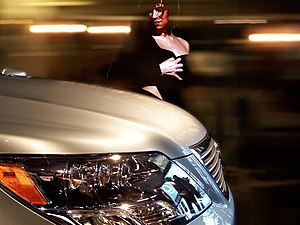In the Part I - Hand Placement of the You Are Driving Wrong series, I discussed where your hands should be placed (9 and 3, not 10 and 2) [link]. This follow up is about 3 steering methods and when to use each type. I'm going to summarize what is on the NHTSA document about Using Efficient Steering Techniques [PDF].
Push/pull Steering - Preferred method
Hand-over-Hand Steering:
One Hand Steering:
Push/pull Steering - Preferred method
- Depending on the direction of the turn, right or left hand pushes the wheel up and the opposite hand slides up, and pulls down.
- Pulling hand moves down, the other hand returns to the its original position.
- Reverse the process to bring the vehicle back to the desired path.
- Hands never cross over the steering wheel, so there is less chance of an injury to the face, hands or arms from an air bag in the event of a crash.
Hand-over-Hand Steering:
- Use when turning at low speeds with limited visibility at an intersection, when parking, or recovering from a skid.
- Left hand grasps the wheel between 8 and 9 o’clock and right hand between 3 and 4 o’clock.

- Depending on the direction of the turn, use the right top third of the wheel to move it to the right and use the left top third of the wheel to move it to the left.
- One hand grasps the wheel and pushes up, the opposite hand lets go, reaches across the other arm, grasps the wheel and pulls the wheel up, over and down.
- As wheel is pulled up, the hand that initiated the pushing motion releases the wheel and returns to its original position.
- Simply reverse the hand-over-hand process to bring the vehicle into your intended path.
One Hand Steering:
- Use one hand steering when backing or operating vehicle controls (wipers, flashers, lights, etc).
- The placement of one hand on the steering wheel is critical to vehicle balance, steering reversals, and potential injury.
- When reaching for an operating control, keep the other hand in the normal position of 8-9 o’clock or 3-4 o’clock, depending on steering wheel design.
- One hand at 12 o’clock is only recommended when backing up and the driver turns in the seat in order to see to the rear.
- The way the wheel is turned when backing is the direction the vehicle will move to the rear.






